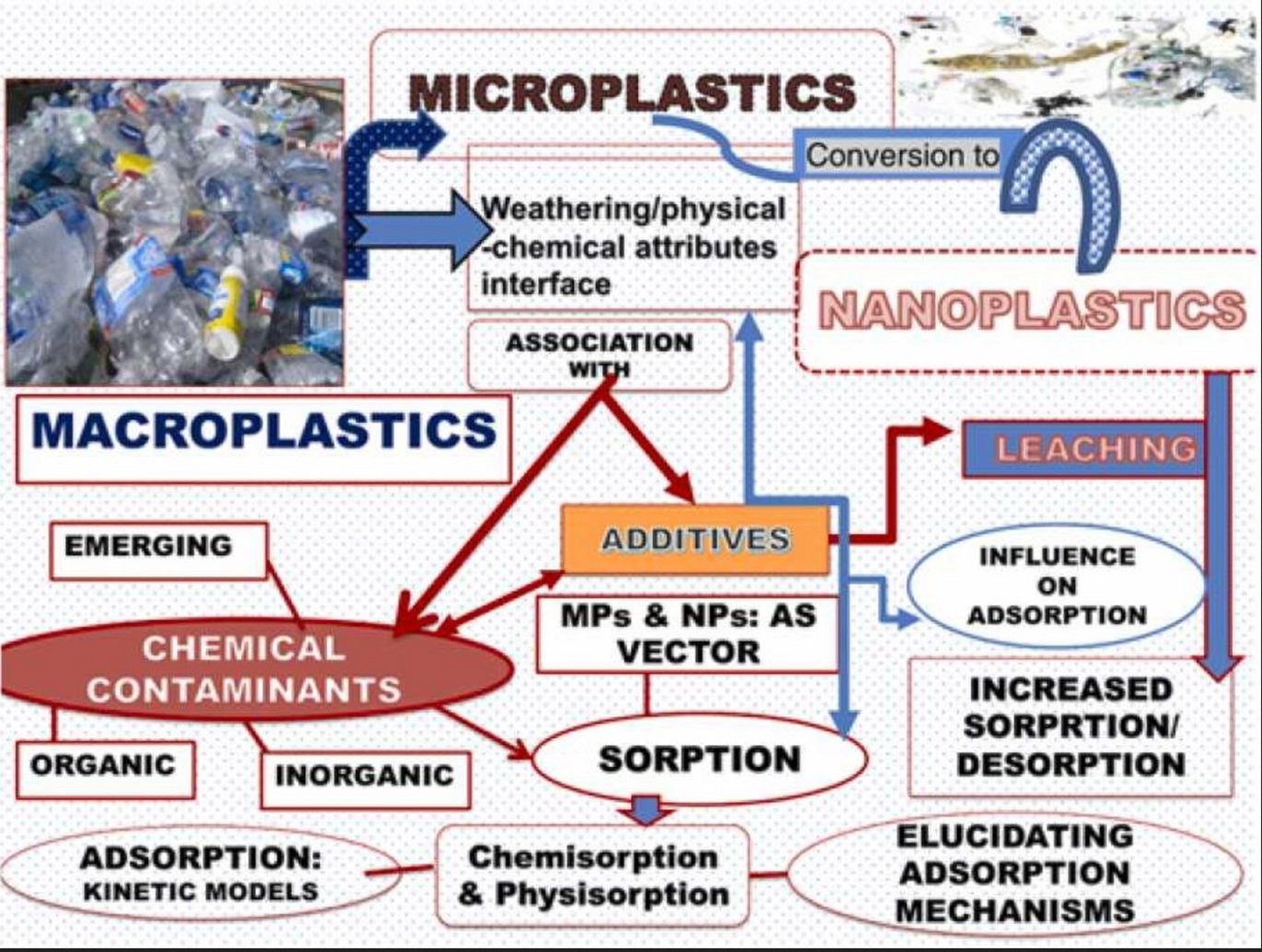Adsorption of environmental contaminants on micro- and nano-scale plastic polymers and the influence of weathering processes on their adsorptive attributes
New publication by Prabhat Kumar Raia, Christian Sonne, Richard J.C. Brown et al.

Abstract:
Increases in plastic-related pollution and their weathering can be a serious threat to environmental sustainability and human health, especially during the present COVID-19 (SARS-CoV-2 coronavirus) pandemic. Planetary risks of plastic waste disposed from diverse sources are exacerbated by the weathering-driven alterations in their physical-chemical attributes and presence of hazardous pollutants mediated through adsorption. Besides, plastic polymers act as vectors of toxic chemical contaminants and pathogenic microbes through sorption onto the ‘plastisphere’ (i.e., plastic-microbe/biofilm-environment interface). In this review, the effects of weathering-driven alterations on the plastisphere are addressed in relation to the fate/cycling of environmental contaminants along with the sorption/desorption dynamics of micro-/nano-scale plastic (MPs/NPs) polymers for emerging contaminants (e.g., endocrine-disrupting chemicals (EDCs), polycyclic aromatic hydrocarbons (PAHs), polychlorinated biphenyls (PCBs), pharmaceuticals and personal care products (PPCPs), and certain heavy metals). The weathering processes, pathways, and mechanisms governing the adsorption of specific environmental pollutants on MPs/NPs surface are thus evaluated in relation to the physicochemical alterations based on several kinetic and isotherm studies. Consequently, the detailed evaluation on the role of the complex associations between weathering and physicochemical properties of plastics should help us gain a better knowledge with respect to the transport, behavior, fate, and toxicological chemistry of plastics along with the proper tactics for their sustainable remediation.
